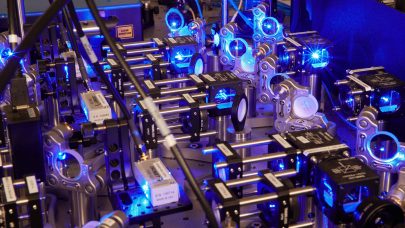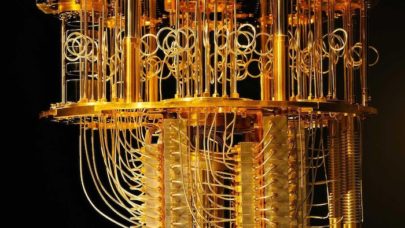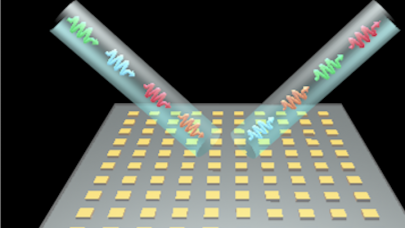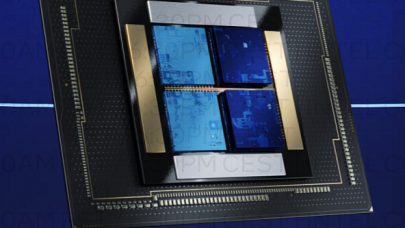HPCwire: The last time we spoke was in early May, after the EuroHPC Summit 2023 conference in Gothenburg, Sweden. A lot has happened since then for the EuroHPC Joint Undertaking. Let me ask first about the contract for the JUPITER exascale system that’s headed for the Jülich Supercomputing Center (JSC). The architecture and configuration surprised many in the HPC community. Can you say more about JUPITER’s technical specifications and what sets this system apart?
Anders Dam Jensen: You are absolutely right: there is no such thing as a quiet period at the JU! And among our recent announcements, the EuroHPC JU signed the procurement contract for JUPITER, the first European exascale supercomputer, just a few weeks ago. It will be installed at the Forschungszentrum Jülich campus in Germany and operated by the Jülich Supercomputing Centre.
First and foremost, JUPITER sets itself apart as the first European system capable of achieving one exaflop in computing power. With its unprecedented computing capacity, JUPITER is set to achieve a significant milestone for European science and innovation.
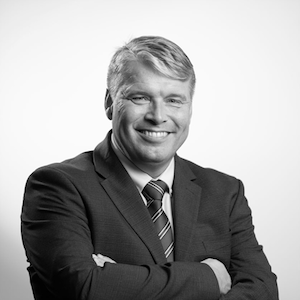
But that’s not all: the architectural design of JUPITER is unique and will mark a significant stride toward establishing European digital sovereignty in the field of supercomputing. This supercomputer will be built using Eviden’s BullSequana XH3000 architecture, employing direct liquid cooling technology and will consist of two partitions: a booster module and a cluster module.
JUPITER’s general-purpose cluster module will rely on the first generation of SiPearl Rhea1 processor. The Rhea processor will integrate seamlessly with the BullSequana XH3000 infrastructure, which was purposefully designed to integrate such processors. This processor has exceptionally high memory bandwidth, extraordinary compute performance and efficiency for an unmatched Byte/Flop ratio. Rhea is the world’s first HPC-dedicated microprocessor, built specifically with a focus on energy efficiency, which is designed to work with different third party accelerators such as GPUs, and also for artificial intelligence workloads.
HPCwire: These are all European-developed technologies?
Anders Dam Jensen: Yes. I am very proud to highlight that all these technologies have been designed in Europe and developed within the framework of the European Processor Initiative (EPI), an initiative supported by the EuroHPC JU. As you know, from its inception, one of the core objectives of the JU has been to develop a full European supercomputing supply chain, encompassing processors, software, applications, and know-how. After several years of discussions and dedicated efforts, it is hugely rewarding to see the first tangible progress on the matter. This progress is made even more significant by the fact that this first European microprocessor for HPCs will underpin the first European supercomputer to exceed the one exaflop threshold. Announcing the start of the installation of this uniquely European machine will begin in early 2024 is for us a significant victory!
The Booster Module of JUPITER will leverage NVIDIA technology, incorporating the Grace-Hopper superchip to accelerate system capabilities while simultaneously reducing energy costs. Another distinct feature of JUPITER lies in its modular architecture, developed by JSC together with the EU-funded DEEP projects and utilising ParTec’s modular ParaStation Modulo operating system.
Such optimised utilisation of its various computing modules ensures JUPITER is specifically tailored to run complex simulations. This architecture also positions the system to be well prepared for the integration of other technologies, such as quantum computing and Artificial Intelligence.
HPCwire: JUPITER’s contract of about 273 million euros will be 50% funded by the JU, with the German federal government and the German state of North Rhine-Westphalia each contributing 25%. How important is the decision to finance 50%?
Anders Dam Jensen: The EuroHPC JU’s funding model has remained consistent from the beginning. The European Union finances 50% of the pre-exascale and exascale systems and 35% of the petascale and mid-range systems. The remainder of the funding is contributed by hosting entities’ consortiums. As a result, systems like LUMI, Leonardo and MareNostrum5 have also received 50% European Union funding from the JU. This 50% funding has been a pivotal element in driving the deployment of a world-class European supercomputing infrastructure by substantially increasing the investments in HPC at European level.
HPCwire: EuroHPC recently announced a tender for a quantum computer to be hosted by the Poznan Supercomputing and Networking Center in Poland. I believe this hybrid system will be the first of six quantum computers EuroHPC plans to acquire fairly soon in collaboration with EU member states. Can you say more about this system and the role of quantum computing within the JU?
Indeed, the EuroHPC JU’s mission also includes the deployment of a world-leading quantum computing infrastructure and ecosystem in Europe. In recent months, we have dedicated considerable efforts to paving the way for such groundbreaking infrastructure in Europe.
In June, the EuroHPC JU signed hosting agreements with six sites across Europe, in Czechia, France, Germany, Italy, Poland and Spain, to host and operate EuroHPC quantum computers.
With these agreements in place, we are preparing to procure these quantum computers, which will be integrated into existing supercomputers. Our priority is to ensure a diversity in European quantum technologies and architectures, providing European users access to diverse and complementary quantum technologies. As such, we are now preparing several distinct calls for tender and are in the process of defining and drafting technical specifications for each quantum computer.
In October, we launched the first of these procurements, with a call for tender to procure EuroQCS-Poland. This quantum computer, located in Poland and hosted by the Poznan Supercomputing and Networking Center (PSNC), will be based on trapped-ions and will be a digital, gate-based quantum computer offering at least 20 physical qubits. Going forward, we will launch the remaining procurements spanning different European Quantum computing technologies, as well as calls targeting the development of hybrid HPC-Quantum Computing middleware technologies, hybrid algorithms and applications. This comprehensive approach to quantum computing covers both hardware and software to support the well-balanced development of the European quantum computing ecosystem.
HPCwire: A follow-up question. Does the choice of a hybrid quantum system mean that the JU sees quantum computing at this stage of its evolution mainly as an accelerator of physics-based simulation codes?
Anders Dam Jensen: Yes, absolutely – although their scope of application is not limited to physics! The six new EuroHPC quantum computers will be integrated into existing supercomputers, for now functioning as accelerators for specific algorithms, similar to the current role of GPUs, which are able to perform certain operations more efficiently than general purpose processors.
Such an approach will offer a novel interpretation of quantum computers as accelerator platforms in genuine HPC environments. Bringing this integration to life will of course require essential R&D developments to create a hybrid software stack that can effectively manage both HPC and quantum computing workloads. Additionally, the integration process will benefit from a close collaboration between the HPC operators and European Standardisation bodies.
While we’re still in the process of making this a reality, it is fascinating work as we prepare for this next technological step – a true quantum leap in HPC technology!
HPCwire: Congratulations on the steady progress. The JU has already procured eight supercomputers, most recently the Deucalion system installed at the University of Minho in Portugal. Deucalion is a Bull Sequana system from Atos subsidiary Eviden and uses ARM A64FX processors from Fujitsu. Is this use of an ARM processor not from Europe an important step in transitioning to ARM CPUs coming out of the European Processor Initiative?
Anders Dam Jensen: Indeed, the inauguration of Deucalion in early September was a great moment of celebration for the JU! As you highlighted, Deucalion is a unique EuroHPC supercomputer, supplied by Fujitsu Technology Solutions and combining ARM A64FX processors and the Bull Sequana technology provided by Eviden. It is the first EuroHPC supercomputer based on ARM processors, paving the way for the EuroHPC-funded European Processor Initiative (EPI) which aims to develop European energy-efficient microprocessors and accelerators bringing towards a strategic autonomy in HPC, chip technologies and infrastructure. This latest addition to our expanding family of EuroHPC supercomputers will provide European users with access to a new design that enriches the diverse and complementary set of computing architectures already made available by the current EuroHPC systems.
HPCWire: Another follow-up question. Is the Deucalion procurement a good example of the JU employing a mix of European and non-European technology as needed along the path toward European HPC technology sovereignty?
Anders Dam Jensen: The JU is acquiring supercomputers through public procurements, in full compliance with EU procurement rules and the objectives set up in the EuroHPC JU Regulation. These rules guide us in striking the balance between the full set of requirements, including how European and non-European technologies might fit into the bids. We also need to be realistic that currently, some non-European technologies are necessary in order to place Europe in a leading position in the global supercomputing race and equip European users with a broad range of technologies and world-class machines that can boost European research and innovation.
But in parallel, and today, more than ever, we continue our efforts to develop a full European supercomputing supply chain through our ambitious research and innovation program. JUPITER, the first European exascale supercomputer will rely on the first generation of SiPearl Rhea1 processor is a strong testimony to the fact that a full European supercomputing ecosystem is becoming a tangible reality!
Furthermore, it is not the intention to close the door on non-European technologies, but to develop competitive European alternatives. What would be welcome is to see is reciprocity, where non-European HPC systems start to include European technologies.
HPCWire: In September, the JU announced a call to support the competitiveness and innovation potential of SMEs, with a budget of up to 30 million euros. How will this initiative operate? Has it been decided who will manage it?
Anders Dam Jensen: Correct, in September we launched a call with the purpose of empowering SMEs with advanced computational capabilities rooted in HPC. This will enable SMEs to foster innovation, boost competitiveness and overcome challenges in the digitisation of R&D and business processes. SMEs will improve their business models and overall performance using HPC, engaging in tasks such as simulations, computational modelling, and data-intensive analytics. Dedicated funds are allocated to SMEs working on large artificial intelligence (AI) models, such as large language models.
The effective use of our world-leading HPC infrastructure will accelerate innovation by fostering new ideas, in-depth research, and the development of novel solutions. Moreover, this call aims to improve productivity and efficiency by reducing production cycles, allowing complex computations to be completed in significantly less time.
SMEs will also benefit from expanded business opportunities and will gain the ability to enter new markets by offering services enabled by HPC, for example based on large-scale generative AI models and machine learning.
The call closed very recently, on Tuesday 7th November. We will now start the evaluation of the received proposals and expect the successful consortium to begin with the implementation by mid-2024. The first calls for proposals addressing SMEs may open still in 2024.
HPCwire: The EuroHPC initiative is a global leader in efforts to make HPC use more pervasive, not only with the SME initiative but also through the EuroCC project, which, as I understand it, aims to help ensure a high level of HPC competency across Europe, in part through existing and new HPC centers where researchers can work in their own languages and address national priorities as well as Europe-wide and global HPC challenges. Can you comment on the status of EuroCC?
Anders Dam Jensen: EuroCC and its Coordination and Support Action CASTIEL, are flagship initiatives of the JU and were among our very first projects to get off the ground in 2020. The work of these two projects underpins the mission of the EuroHPC JU by supporting European HPC users and the development of a consistent skills base across Europe.
In just two years, EuroCC and CASTIEL have built a network of more than 30 National Competence Centres for HPC (NCC) across Europe, with each NCC acting as a hub to promote and facilitate HPC uptake and related technologies across Europe. The EuroCC’s competence centres act as single entry point targeting the specific needs of European users from academia, industry – especially SMEs – and public administration, offering them tailored solutions, adapted to the local environment and in their own languages as you mentioned. The ultimate objective is to increase access to HPC opportunities and widen the use of HPC in Europe.
These two projects are also key in identifying and addressing the skills gaps in the European HPC ecosystem and coordinating cooperation across Europe to ensure a consistent skills base.
Based on such a successful first funding period, the next logical step has been to launch a second funding phase in January 2023 for 3 years. The NCCs will thus continue to boost synergies between the European and national levels to support a thriving European HPC ecosystem.
HPCwire: What’s next for the EuroHPC JU? When can we expect the next big announcements?
Anders Dam Jensen: As the year comes to a close, we have an exciting lineup of calls set to be launched in alignment with our 2023 work programme.
By the end of November, we will for instance launch a call for proposals to establish a dedicated pan-European support centre for HPC-powered AI applications. The call will build upon existing support services, specifically those offered by the EuroCC network. The aim is to create a single access point to Europe’s most advanced competences for the development and training of large-scale AI models. This initiative will enable European AI communities to scale up their AI workflows by harnessing state-of-the-art supercomputing resources, to develop complex models with significant impact throughout Europe, including foundation models for generative AI.
By the end of the year, we will also publish calls for expression of interest for the selection of hosting entities to acquire and operate additional mid-range systems and an industrial-grade EuroHPC supercomputer.
As mentioned earlier in our discussion, we will also continue our efforts to launch the remaining procurements for the EuroHPC quantum computers as well as calls targeting the development of hybrid HPC-Quantum Computing middleware technologies and hybrid algorithms and applications. Additionally, we plan to launch a call for expressions of interest to host a second wave of quantum computers.
In October, the JU also launched a call for tender for the EuroHPC Federation Platform. The call will close by December, 8 2023 and we should be able to start the selection of proposals by the end of the year. Through this call, the JU will select a platform to federate European supercomputing resources, providing secure access for a wide range of public and private users across Europe. This platform will act as a one-stop shop access point for any HPC, quantum computing or data service managed by the Joint Undertaking, providing any user with a single point of entry. For me, this call is really representative of the fact that the JU has now left its teenage years behind, as was stated by the then chair of the EuroHPC Governing Board, Dr Herbert Zeisel, at the opening plenary of the EuroHPC Summit 2023. Indeed, now that the JU has built a top-of-the-range HPC infrastructure, European supercomputing can take the next step and the time has come to federate this world-class European infrastructure to ease and widen its use.
In November, MareNostrum 5, the EuroHPC supercomputer hosted by BSC in Barcelona, is also set to make its debut on the TOP500 list. I am really looking forward to this as a moment of celebration for the EuroHPC Joint Undertaking, as it will mark the completion of the first generation of EuroHPC supercomputers. With all eight first systems online and accessible to European scientific endeavours, this represents the successful maturation of the initial wave of EuroHPC-funded supercomputers.
In December, the JU will host its first EuroHPC User Day! The event will take place on the 11th of December in Brussels, Belgium and marks the first of many such events aimed at bringing together the EuroHPC user community. I am looking forward to meeting and hearing from our users to gain a better understanding of how our world-class systems are concretely advancing science and fostering innovation in Europe, but also how we can further improve our support for them in the future.
Looking ahead to 2024, several new research and innovation projects are on the horizon. In this context, we will officially launch a partnership between the JU and a consortium consisting of industry, research organisations and institutions in HPC to develop an innovative HPC hardware and software technology based on the open RISC-V ecosystem. 2024 will also see the procurement of the second European exascale supercomputer, to be located in France and hosted by the Jules Verne consortium.
Next year, we will also extend our R&D effort to develop post-exascale capabilities in the Union and we will explore the creation of an ultra-high-speed network that will connect the federated EuroHPC supercomputing infrastructure, providing additional opportunities for the European users, researchers, businesses and industry.
Finally, we have initiated the preparations for our next EuroHPC Summit in 2024, which will take place from the 18th to the 21st of March, in Antwerp in Belgium. And I hope to see you there!































